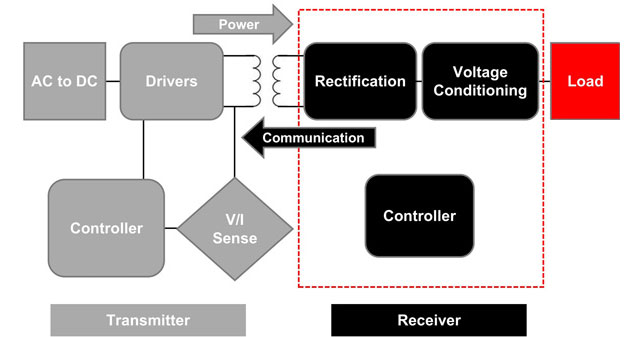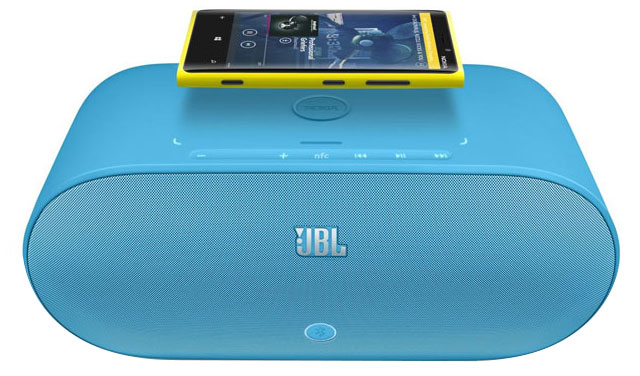How Qi Wireless Universal Chargers Work
As you know, our newest Nokia Lumia 920 and Nokia Lumia 820 smartphones have the ability to wirelessly charge: the flagship model is charging out of the box through the air, and for the Lumia 820 you need to buy a replaceable case with the possibility of wireless charging.

The world has already been shown devices with wireless charging, such as a Touchstone charger for Palm Pre, Powermat for iPhone, induction charges from Energizer. But unlike these charges, created according to our own specifications, and therefore incompatible with other devices, we use the Qi standard - the only globally accepted interface for wireless charging of devices created by the Wireless Power Consortium, consisting of more than 100 different companies.
The Qi standard is designed to transmit energy to various devices using magnetic induction. Technically, this is very similar to the solution used to charge electric toothbrushes.
')
In simple terms, the base station consists of an induction coil that creates an electromagnetic field when an alternating current enters. In the device that needs to be charged, there is a similar coil capable of capturing this field, converting the received energy into direct current, which is used to charge the battery.

If we look at the process in more detail, then in wireless charging the transmitter ( transmitter ) consists of a current converter ( ac-dc power converter ), drivers , a transmitting coil, a potential and current readout ( voltage and current sensing ) and controller ( controller ). A receiver ( receiver ) contains a receive coil ( receive coil ), a rectifier ( rectification ), a voltage regulator ( voltage conditioning ) and a controller ( controller ).
Energy is transmitted from the transmitter to the receiver through an interconnected magnetic field that occurs when the alternating current flows through the coil of the transmitter. If the receiver's coil is in close proximity, a significant part of the transmitter power lines will pass through the receiver's coil, creating an alternating current in the receiver, which is then converted to a DC voltage.
View an interactive presentation with a detailed description of the technology available on the WPC website .
The energy efficiency of Qi wireless chargers is about 80%. It should be understood that the energy efficiency of 100% is simply impossible to achieve, with standard wired chargers, this figure ranges from 75% to 95% at best.
As for the safety of wireless chargers, we can state that we use non-ionizing frequencies that do not have a harmful physiological impact. The Qi 1.1 standard includes the detection of foreign objects in the field of action of the charger, providing additional safety of use; Charging is possible only with Qi-compatible devices. Also, our chargers and smartphones have built-in safety mechanisms based on thermal monitoring.
After the publication of the low-power (five watts) Qi specification in August 2009, in 2011, the Wireless Power Consortium began work on expanding the specification to average power, allowing it to increase power to 120 watts. Despite the fact that the first specification is enough to charge the phones, the new Qi standard will be able to provide not only charging of smartphones, but also, for example, requiring more powerful tablets.
Thanks to the Wireless Power Consortium, the ecosystem of wireless chargers is developing at a very fast pace. So, we have entered into agreements with Virgin Atlantic and The Coffee Bean & Tea Leaf, where soon all the tables will be equipped with built-in chargers: the phone will be charged just lying on the table while you are drinking your coffee. In Russia, we are also negotiating cooperation with various businesses in order to introduce the same tables with wireless chargers in their establishments as soon as possible.

In addition to the main charger - Nokia's wireless charging pad - we have a Nokia wireless charging pad from Fatboy , a Nokia wireless charging pad and a JBL PowerUp column for Nokia with a wireless charging function that not only charges your phone according to Qi standard, but also loses music, connecting via NFC - we have already written about it.

The world has already been shown devices with wireless charging, such as a Touchstone charger for Palm Pre, Powermat for iPhone, induction charges from Energizer. But unlike these charges, created according to our own specifications, and therefore incompatible with other devices, we use the Qi standard - the only globally accepted interface for wireless charging of devices created by the Wireless Power Consortium, consisting of more than 100 different companies.
The Qi standard is designed to transmit energy to various devices using magnetic induction. Technically, this is very similar to the solution used to charge electric toothbrushes.
')
How it works?
In simple terms, the base station consists of an induction coil that creates an electromagnetic field when an alternating current enters. In the device that needs to be charged, there is a similar coil capable of capturing this field, converting the received energy into direct current, which is used to charge the battery.

If we look at the process in more detail, then in wireless charging the transmitter ( transmitter ) consists of a current converter ( ac-dc power converter ), drivers , a transmitting coil, a potential and current readout ( voltage and current sensing ) and controller ( controller ). A receiver ( receiver ) contains a receive coil ( receive coil ), a rectifier ( rectification ), a voltage regulator ( voltage conditioning ) and a controller ( controller ).
Energy is transmitted from the transmitter to the receiver through an interconnected magnetic field that occurs when the alternating current flows through the coil of the transmitter. If the receiver's coil is in close proximity, a significant part of the transmitter power lines will pass through the receiver's coil, creating an alternating current in the receiver, which is then converted to a DC voltage.
View an interactive presentation with a detailed description of the technology available on the WPC website .
Interesting details
- The charger may consist of several transmitting coils, which are activated depending on the position of the device on it, which must be charged.
- Qi standard supports data transfer protocol between charging and charging devices at a speed of 2 kbit / s. Now, according to this protocol, information about the required level of electricity for full charging is transmitted from the charging device, as well as reports that the device is charged.
Energy efficiency
The energy efficiency of Qi wireless chargers is about 80%. It should be understood that the energy efficiency of 100% is simply impossible to achieve, with standard wired chargers, this figure ranges from 75% to 95% at best.
Security
As for the safety of wireless chargers, we can state that we use non-ionizing frequencies that do not have a harmful physiological impact. The Qi 1.1 standard includes the detection of foreign objects in the field of action of the charger, providing additional safety of use; Charging is possible only with Qi-compatible devices. Also, our chargers and smartphones have built-in safety mechanisms based on thermal monitoring.
The future of wireless charging
After the publication of the low-power (five watts) Qi specification in August 2009, in 2011, the Wireless Power Consortium began work on expanding the specification to average power, allowing it to increase power to 120 watts. Despite the fact that the first specification is enough to charge the phones, the new Qi standard will be able to provide not only charging of smartphones, but also, for example, requiring more powerful tablets.
Thanks to the Wireless Power Consortium, the ecosystem of wireless chargers is developing at a very fast pace. So, we have entered into agreements with Virgin Atlantic and The Coffee Bean & Tea Leaf, where soon all the tables will be equipped with built-in chargers: the phone will be charged just lying on the table while you are drinking your coffee. In Russia, we are also negotiating cooperation with various businesses in order to introduce the same tables with wireless chargers in their establishments as soon as possible.

In addition to the main charger - Nokia's wireless charging pad - we have a Nokia wireless charging pad from Fatboy , a Nokia wireless charging pad and a JBL PowerUp column for Nokia with a wireless charging function that not only charges your phone according to Qi standard, but also loses music, connecting via NFC - we have already written about it.
Source: https://habr.com/ru/post/153909/
All Articles